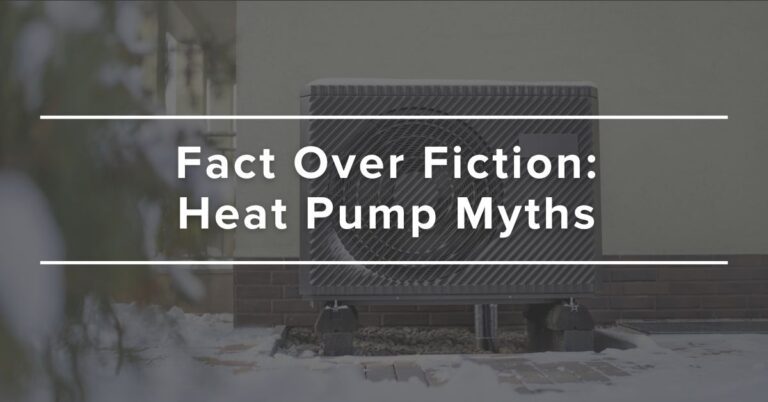
When you’re facing months of subzero temperatures in Anchorage, keeping your home warm is non-negotiable. But that doesn’t mean you have to accept outrageous heating bills as part of Alaska life. With the right strategies, you can stay cozy all winter while keeping more money in your pocket.
Here’s how to maximize your heating efficiency and reduce energy costs this winter:
1. Schedule Fall Heating System Maintenance
Before winter hits, professional heating system maintenance is essential for maximizing efficiency. A certified HVAC technician will clean and inspect your furnace or boiler, test system performance, check for gas leaks, and identify issues that waste energy. A well-maintained heating system uses less fuel to produce the same amount of heat, which translates directly to lower heating bills all winter long.
2. Zone Your Heating for Maximum Savings
Not every room needs to be the same temperature all the time. If you have a multi-zone heating system, take advantage of it. Lower temperatures in guest rooms and spaces you don’t use regularly. If you have forced-air heating, partially close vents in less-used areas to redirect warm air where you need it most. Zone heating can reduce your energy bills by up to 30%.
3. Upgrade to High-Performance Windows
Windows are one of the biggest sources of heat loss in Alaska homes. Single-pane windows are essentially holes in your walls when it comes to energy efficiency. Upgrading to double or triple-pane windows with low-E coatings can cut heat loss dramatically and reduce heating costs. If new windows aren’t in the budget, window insulation film and heavy thermal curtains provide a cost-effective improvement.
4. Optimize Your Heating System Settings
Many homeowners never adjust their heating system beyond the thermostat. If you have a furnace with a variable-speed blower, make sure it’s set correctly. Check that your boiler’s aquastat is properly calibrated. These technical adjustments can improve comfort while reducing fuel consumption and lowering utility bills, but they’re best handled by a professional during a maintenance visit.
5. Address Basement and Crawlspace Heat Loss
Uninsulated or poorly insulated basements and crawlspaces are major energy wasters in Anchorage homes. Heat naturally migrates downward and out through these areas. Adding insulation to basement walls and rim joists, insulating crawlspace walls, and sealing foundation cracks can all prevent heat loss and save on heating costs.
6. Use Supplemental Heating Strategically
Space heaters and other supplemental heat sources can be cost-effective if used smartly. Heat only the rooms you’re using and lower your whole-home thermostat slightly. But be careful because electric resistance heating is expensive to run in Alaska. Calculate the costs before relying too heavily on portable heaters.
7. Maintain Consistent Temperatures
While it might seem counterintuitive, letting your home get very cold and then reheating it can actually use more energy than maintaining a moderate temperature. Major temperature swings force your heating system to work at maximum capacity for extended periods. Small adjustments (5 to 8 degrees) are more efficient for reducing energy costs than dramatic setbacks.
8. Track Your Energy Usage
Keep an eye on your monthly heating bills and energy usage. Sudden increases can indicate problems like a failing heating system component, new air leaks, or thermostat issues. Many utility companies in Anchorage offer online tools that let you track daily usage patterns, helping you identify what adjustments make the biggest difference in lowering heating bills.
9. Upgrade to High-Efficiency Equipment
If your furnace or boiler is 15 to 20 years old, it’s operating at much lower efficiency than modern heating systems. Today’s high-efficiency furnaces can achieve 95 to 98% efficiency compared to 60 to 70% for older units. That’s a 30 to 40% reduction in fuel consumption and heating costs for the same amount of heat. When your system needs major repairs, replacement often makes more financial sense.
10. Consider Heat Recovery Ventilation
Proper ventilation is crucial in tight, energy-efficient homes. Heat recovery ventilators (HRVs) or energy recovery ventilators (ERVs) bring in fresh air while recovering heat from exhaust air, maintaining air quality without wasting energy and helping reduce heating costs in Alaska’s climate.
Start Saving on Heating Costs Today
Improving your home’s energy efficiency doesn’t have to mean a complete overhaul. Even small changes add up over the course of an Alaskan winter. The key is to start somewhere and build on your improvements each year.
Ready to make your Anchorage home more energy efficient and lower your heating bills? Diamond Heating can help you identify opportunities to reduce your heating costs while keeping your home comfortable all winter long. With over 25+ years of experience serving Anchorage homeowners, we understand what works in Alaska’s climate. Contact us today to schedule a heating system tune-up or discuss energy-efficient heating solutions for your home.

